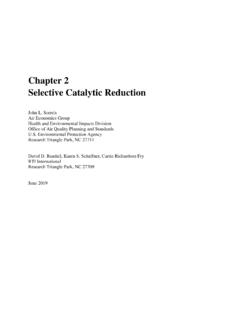Transcription of Lazard's Levelized Cost of Hydrogen Analysis—vF
1 LAZARD S Levelized COST OF Hydrogen ANALYSISJUNE 2021 This study has been prepared by Lazard for general informational purposes only, and it is not intended to be, and should not be construed as, financial or other advice. No part of this material may be copied, photocopied or duplicated in any form by any means or redistributed without the prior consent of 2021 Lazard Lazard s Levelized Cost of Hydrogen Analysis Executive SummaryLAZARD S Levelized COST OF Hydrogen ANALYSISO verview ofAnalysisLazard has undertaken an analysis of the Levelized Cost of Hydrogen ( LCOH ) in an effort to provide greater clarity to Industry participants on the potentially disruptive role of Hydrogen across a variety of economic sectors. Our LCOH builds upon, and relates to, our annual Levelized Cost of Energy ( LCOE ) and Levelized Cost of Storage ( LCOS ) studies.
2 Given this breadth, we have decided to focus the analysis on the following key topics: An overview of the various methods for producing Hydrogen and various applications of Hydrogen across economic sectors A discussion of FAQs pertaining to Hydrogen given its relatively nascent presence across most economic sectors A Levelized cost analysis of green Hydrogen ( , Hydrogen produced using water and renewable energy) based on two primary electrolyzer technologies and an illustrative set of electrolyzer capacities Our analysis intentionally focuses on a key subset of assumptions for calculating the LCOH. The additional factors listed below have been intentionally excluded but would also have an impact on the delivered cost of green Hydrogen : Conversion to other states and/or additional purification for the production of other chemicals ( , liquefaction, production of ammonia, methanol, etc.)
3 Compression and/or storage costs, whether on- or off-site Transmission, distribution and transportation costs ( , pipeline, truck, ship, etc.) Additional investment and/or retrofitting of end-use infrastructure/equipment for the use of Hydrogen vs. the original fuel sourceOverview of Hydrogen Production and applications Hydrogen is currently produced primarily from fossil fuels using steam-methane reforming and methane splitting processes ( , gray Hydrogen ) A variety of additional processes are available to produce Hydrogen from electricity and water, which are at varying degrees of development and commercial viability Given its versatility as an energy carrier, Hydrogen has the potential to be used across industrial processes, power generation and transportation, creating a potential path for decarbonizing energy-intensive industries where current technologies/alternatives are not presently viableCost Analysis Green Hydrogen is currently more expensive than the conventional fuels or Hydrogen it would displace the intent of this cost analysis is to benchmark the LCOH of green Hydrogen on a $/kg basis such that readers may convert to the equivalent cost of a given end use of interest (.)
4 Asfeedstock for ammonia production, displacing natural gas in a power plant, etc.) applications which require minimal additional steps ( , conversion, storage, transportation, etc.) to reach the end user will achieve cost competitiveness sooner than those that do not This dynamic is further amplified to the extent that end uses require retrofitting equipment to utilize Hydrogen vs. the conventional alternatives Electricity represents ~30% 60% of the cost to produce Hydrogen from electrolyzers with a capacity of 20+ MW the LCOH is therefore highly dependent on the cost of the available sources of electricity The next-most significant driver of the LCOH is the cost of the electrolyzer, which is expected to decrease as a result of rapid growth in industry scale and technological advancement In assessing the cost profile of green Hydrogen , the relative cost position of green Hydrogen as compared to conventional fuels or gray Hydrogen is an obvious core component of the analysis as is the relevant use case being compared A cost of carbon, or avoidance of such costs.
5 Is not included in the LCOH nor are government support mechanisms both of these factors could be impactful to any cost/project analysisNote:Lazard s LCOH analysis is conducted with support from Roland Berger. This analysis is illustrative in nature and should not be considered as a benchmark for any given project. This analysis should not be considered as a basis from which to make investment, regulatory or strategic decisions or of Hydrogen Production and ApplicationsThis study has been prepared by Lazard for general informational purposes only, and it is not intended to be, and should not be construed as, financial or other advice. No part of this material may be copied, photocopied or duplicated in any form by any means or redistributed without the prior consent of 2021 Lazard Leading Processes for Hydrogen ProductionI OVERVIEW OF Hydrogen PRODUCTION AND APPLICATIONSH ydrogen has historically been produced primarily through the use of fossil fuels.
6 However, improvements in the cost effectiveness of renewable energy and electrolyzer technology create a path for economically viable green hydrogenSource: World Nuclear Association (2020), Hydrogen Council, International Energy Agency, Fuel Cell and Hydrogen Energy Association and National Renewable Energy ReformingThermochemical SplittingLow-Temperature ElectrolysisMethane SplittingHigh-Temperature Steam ElectrolysisCarbon Dioxide (CO2)Carbon Dioxide (CO2) Capture and StorageCarbon Monoxide (CO)Oxygen (O2)Oxygen (O2) Steam reforming involves injecting steam into natural gas, producing gray Hydrogen and CO2 Subsequent CO2capture and storage produces blue Hydrogen Methane splitting utilizes a high-temperature plasma to split natural gas into blue Hydrogen and carbon monoxideFossil FuelsNuclear EnergyRenewable EnergyBlue HydrogenGray HydrogenYellow HydrogenGreen HydrogenOxygen (O2)
7 Thermochemical splitting utilizes a high-temperature process to produce yellow Hydrogen and oxygen High-temperature steam electrolysis utilizes an electric current and high-temperature steam to produce yellow Hydrogen and oxygen Low-temperature electrolysis is an electrochemical process in which a current is applied to water to produce green Hydrogen and oxygen Alkaline and polymer electrolyte membrane ( PEM ) electrolyzers are currently the primary technologies utilized for low-temperature electrolysisWater (H2O)Water (H2O)Water (H2O)2 This study has been prepared by Lazard for general informational purposes only, and it is not intended to be, and should not be construed as, financial or other advice. No part of this material may be copied, photocopied or duplicated in any form by any means or redistributed without the prior consent of 2021 Lazard Hydrogen applications in Today s EconomyI OVERVIEW OF Hydrogen PRODUCTION AND APPLICATIONSThe adaptability of Hydrogen to supplement or replace gaseous and liquid fossil fuels creates numerous opportunities to address the needs of a variety of economic sectorsSource.
8 Hydrogen Council, International Energy Agency, Fuel Cell and Hydrogen Energy Association and National Renewable Energy & FUEL CELLGAS & FUEL CELLH2 GAS & LIQUID/ SYNTHETIC FUELO therNotesSector Gaseous Hydrogen and ammonia can be utilized as fuel substitutes in power generation, gas distribution, and combined heat and power ( CHP ) applications Hydrogen could also provide a means for providing seasonal storage for the power grid Hydrogen is used in refining and can be integrated into the production processes for carbon-intensive materials such as aluminum, iron, steel and cement The production of ammonia, methanol and other industrial chemicals requires Hydrogen as a primary ingredient Hydrogen can be combined with carbon dioxide to produce low- or net-zero emissions aviation and synthetic fuels, depending on the initial source of carbon dioxide HFEVs are a viable alternative to BEVs for larger/heavier passenger vehicles ( , sport utility vehicles)
9 , where the additional carrying capacity of fuel offsets the relatively heavier vehicle platform HFEVs maintain an advantage over BEVs to the extent the weight-to-power density profile of larger passenger vehicles offsets the lower efficiency of the gas-to-electricity conversion processForm Gaseous Hydrogen can be combusted directly, or when paired with fuel cells, can function as a substitute for conventionalfuels ( , natural gas, fuel oil, etc.) for use in commercial and industrial vehicles ( , forklifts, etc.) Hydrogen fuel cell electric vehicles ( HFEVs ) compete favorably with battery electric vehicles ( BEVs ) in industrial applications that require high uptime, quick refueling and the ability to move heavy loads Ammonia and methanol are viable substitute fuels for various heavy-duty applications ( , maritime)
10 , where the energy density and ease of handling of these fuels is competitive with conventional alternativesOil and Gas ProductionPowerGas Distribution/District HeatingMaritime Shipping and/or TravelHeavy-Duty/Industrial VehiclesAviationHeavy/Specialty IndustryLight-Duty VehiclesIndustrial Chemical ProductionCargo and/or Passenger Rail3 IIFrequently Asked Questions Pertaining to HydrogenThis study has been prepared by Lazard for general informational purposes only, and it is not intended to be, and should not be construed as, financial or other advice. No part of this material may be copied, photocopied or duplicated in any form by any means or redistributed without the prior consent of 2021 Lazard What Is GreenHydrogen and HowCan It Support the Decarbonization of Economic Activity?

![[Logo To Come] - Lazard](/cache/preview/b/e/f/6/9/1/8/9/thumb-bef691898073c3588972f362b9ac0cd8.jpg)















